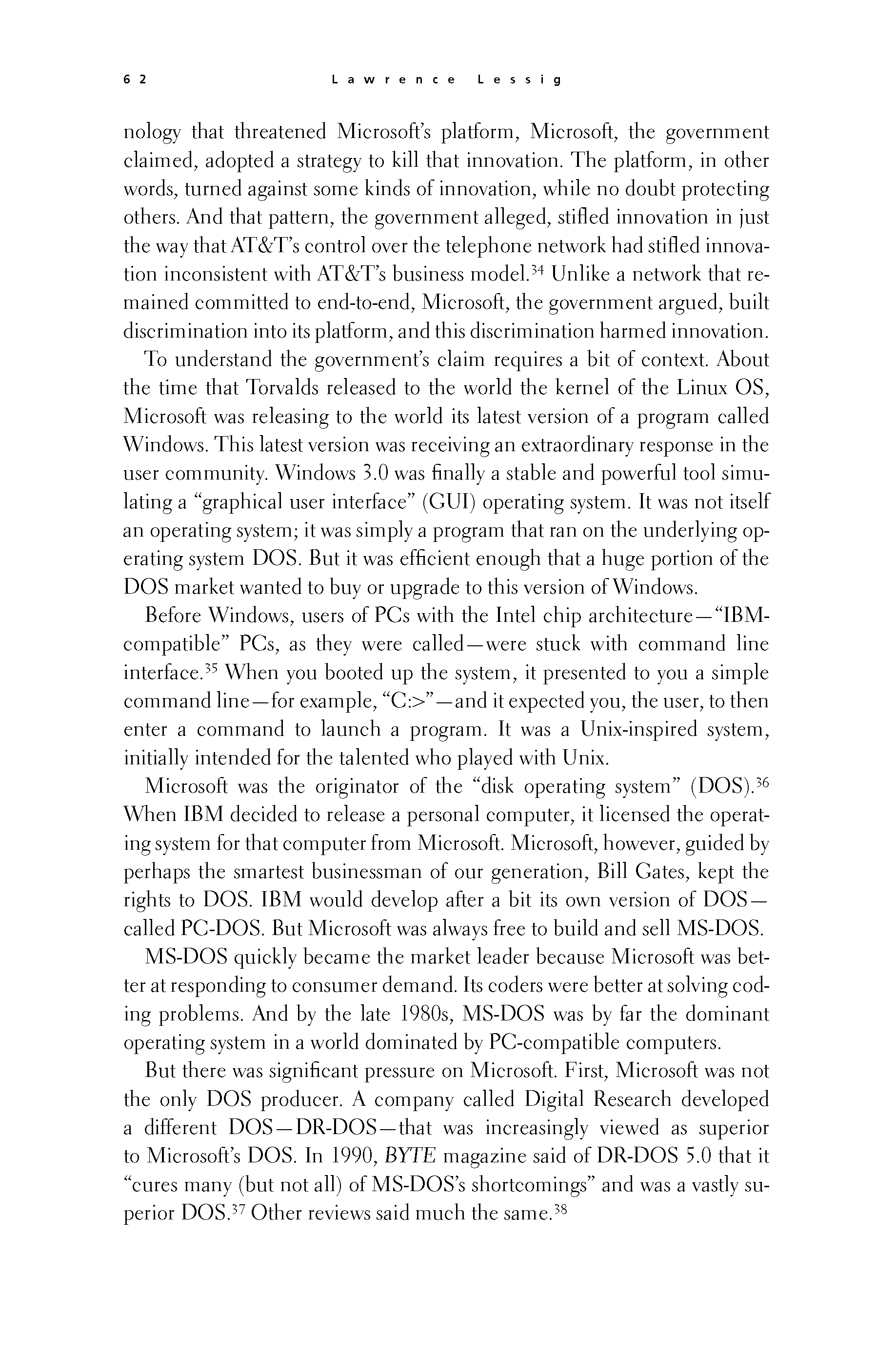 p061 _
-chap- _
toc-1 _
p062w _
toc-2 _
+chap+ _
p063
p061 _
-chap- _
toc-1 _
p062w _
toc-2 _
+chap+ _
p063
nology that threatened Microsoft's platform, Microsoft, the government
claimed, adopted a strategy to kill that innovation. The platform, in other
words, turned against some kinds of innovation, while no doubt protecting
others. And that pattern, the government alleged, stifled innovation in just
the way that AT&T's control over the telephone network had stifled innova-
tion inconsistent with AT&T's business model.[4-34] Unlike a network that re-
mained committed to end-to-end, Microsoft, the government argued, built
discrimination into its platform, and this discrimination harmed innovation.
To understand the government's claim requires a bit of context. About
the time that Torvalds released to the world the kernel of the Linux OS,
Microsoft was releasing to the world its latest version of a program called
Windows. This latest version was receiving an extraordinary response in the
user community. Windows 3.0 was finally a stable and powerful tool simu-
lating a "graphical user interface" (GUI) operating system. It was not itself
an operating system; it was simply a program that ran on the underlying op-
erating system DOS. But it was efficient enough that a huge portion of the
DOS market wanted to buy or upgrade to this version of Windows.
Before Windows, users of PCs with the Intel chip architecture -- "IBM-
compatible" PCs, as they were called -- were stuck with command line
interface.[4-35] When you booted up the system, it presented to you a simple
command line -- for example, "C:>" -- and it expected you, the user, to then
enter a command to launch a program. It was a Unix-inspired system,
initially intended for the talented who played with Unix.
Microsoft was the originator of the "disk operating system" (DOS).[4-36]
When IBM decided to release a personal computer, it licensed the operat-
ing system for that computer from Microsoft. Microsoft, however, guided by
perhaps the smartest businessman of our generation, Bill Gates, kept the
rights to DOS. IBM would develop after a bit its own version of DOS --
called PC-DOS. But Microsoft was always free to build and sell MS-DOS.
MS-DOS quickly became the market leader because Microsoft was bet-
ter at responding to consumer demand. Its coders were better at solving cod-
ing problems. And by the late 1980s, MS-DOS was by far the dominant
operating system in a world dominated by PC-compatible computers.
But there was significant pressure on Microsoft. First, Microsoft was not
the only DOS producer. A company called Digital Research developed
a different DOS -- DR-DOS -- that was increasingly viewed as superior
to Microsoft's DOS. In 1990, _BYTE_ magazine said of DR-DOS 5.0 that it
"cures many (but not all) of MS-DOS's shortcomings" and was a vastly su-
perior DOS.[4-37] Other reviews said much the same.[4-38]
[[62]]
p061 _
-chap- _
toc-1 _
p062w _
toc-2 _
+chap+ _
p063